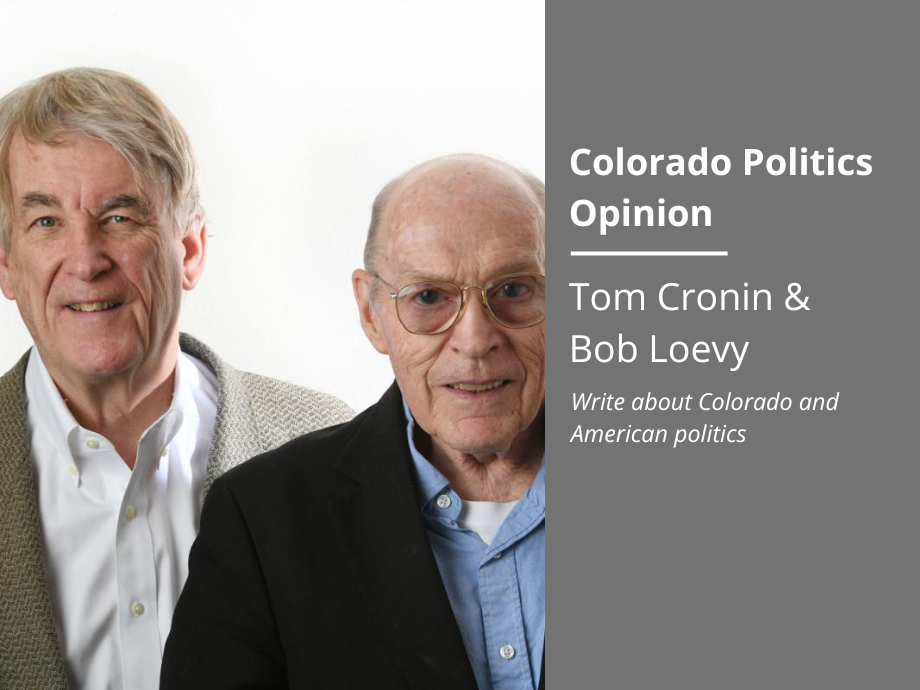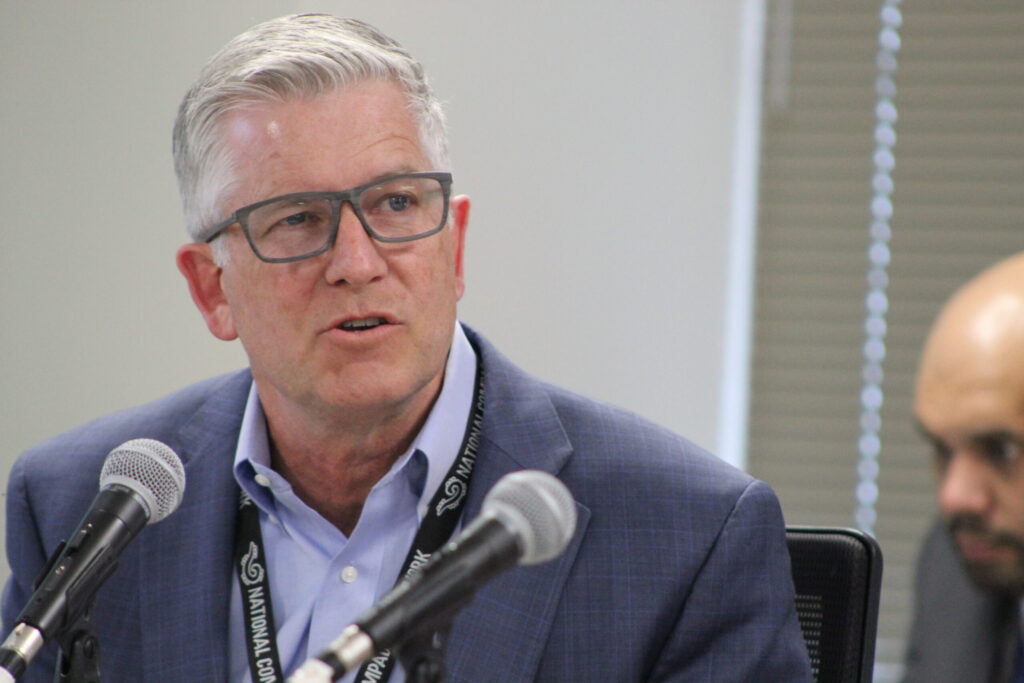How Trump won in 2016, and could do it again in 2024 | CRONIN & LOEVY

“The Accidental Presidency” is an American-made low-budget documentary film by British filmmaker James Fletcher. It explains how businessman Donald J. Trump captured the Republican Party’s presidential nomination and defeated Hillary Clinton to become the American president in the 2016 election.
By majority rule Hillary Clinton won. She captured 3 million more votes than Trump did, but he prevailed in the Electoral College, which, as required by the U.S. Constitution since its ratification in 1788, is the sole determinant of who is elected U.S. president.
Four years later, Trump lost to former Vice President Joe Biden by more than 8 million popular votes. Trump also lost to Biden narrowly in the Electoral College. Yet about 100,000 more votes for Trump in the right states in 2020 would have reelected him.
This documentary film is an unbiased effort to explain Trump’s surprise upset victory in 2016. Few people at the time expected Trump to win the Republican nomination, let alone win the presidency.
Stay up to speed: Sign up for daily opinion in your inbox Monday-Friday
This film reveals how Trump could do it all again in 2024 and wind up with four more years in the White House.
In 2016, Trump was a celebrity, known primarily for his high-living, semi-playboy lifestyle and his hotels. He hosted an NBC reality television series, but he had zero political experience. He had donated campaign funds to both political parties.
His major contribution to public life had been his championing of the complaint that then-U.S. Sen. Barack Obama might not be a legitimate U.S. citizen.
He did not invent the so-called “birther issue,” but he relished becoming a spokesman for that false accusation. And he loved the national attention it brought him.
Few pundits and pollsters believed Trump would defeat Hillary Clinton in 2016. She had been a Democratic activist for decades, an impressive first lady, a U.S. senator from New York, and a serious presidential candidate in 2008. Then she served for several years as U.S. Secretary of State under President Obama.
Fletcher’s documentary film features interviews with 30 or more political analysts, pundits and pollsters from both political parties. Among his commenters were Aaron Sorkin, Kellyanne Conway, Republican pollster Frank Luntz, John McCain campaign manager Steve Schmidt, Van Jones, Molly Brown and Anthony Scaramucci.
The retrospective verdict on the Clinton campaign is that she was outcampaigned. She was well prepared, won the debates and made few mistakes. However she did make a major mistake in calling Trump supporters “deplorables.” And she made another major mistake in not even showing up to campaign in crucial midwestern swing states like Wisconsin.
In contrast to Trump, Clinton seemed boring, controlled and cautious. As one journalist quoted in this film notes, her campaign was “all math and no poetry.” She was also hurt by a clumsy FBI investigation about her deleted personal e-mails while she was U.S. secretary of state.
Not discussed in this documentary is that she also was burdened by some of the “baggage” that came along with being the wife of former President Bill Clinton.
Trump was blessed in running against about a dozen candidates for the Republican nomination. He enjoyed greater name recognition than they did. He also had more stagecraft, television and acting ability than any of them.
Second, he was aggressive, pugilistic and a gut-puncher. He gave insulting nicknames to most of his rivals in the Republican primaries, such as “Little Marco,” “Low-Energy Jeb,” “Lyin’ Ted,” and so forth. Later, in the general election, it would be “Crooked Hillary.”
No one seems able to explain how Trump’s disruptive, impolite and rogue combative style became acceptable to his followers. But what is clear is he attracted more media coverage than anyone else.
The media may not have liked him, but he was great for their ratings. He was a big show. He was entertainment. People kept watching him for the “bad-boy” rants or insults, many of which were negative jabs at the media and commentators.
These retrospective interviews highlight how Trump was skillful in exploiting the anger and angst many groups felt toward the Democrats, toward the government in Washington and toward traditional politics. Trump spoke to those who felt left behind by trade agreements like NAFTA, which supposedly lost U.S. jobs to other nations.
He spoke on behalf of those who believed the Democrats had become a party that too aggressively favored abortion, gay rights and diversity at the expense of rural Americans, religious Americans and people who feared being replaced by immigrants and minorities.
This won Trump the unexpected yet enthusiastic backing of evangelical leaders like Jerry Falwell. They were willing to overlook Trump’s character flaws because of his pledges to nominate conservative Supreme Court judges who would rule in favor of allowing state governments to limit abortions.
Trump also criticized the war in Iraq and signaled his support for a more isolationist “America First” foreign policy. He surprisingly challenged the internationalism of Republicans George H.W. Bush, George W. Bush, Dick Cheney and John McCain. He found he could attract supporters for his isolationism from both parties and even from left-leaning anti-war Bernie Sanders supporters.
Many people dismissed Trump as just in the race to embellish his brand. The idea was he really did not want to win this job.
This may have been the case at the outset, but Trump plainly loved the attention of running for president and threw himself into the race with an energy that left his rivals in the dust.
He also built upon the media attention-grabbing role of rallies. He had seen Obama use these events effectively. He perfected these rallies, turning them into events that mobilized his base and attracted enormous amounts of free media.
He and his campaign also utilized new social media platforms like Twitter. He developed huge followings that could raise money and generate support among his new coalition of rural Americans, evangelical Americans, working-class Americans and isolationists.
He was remarkably able to merge these new followers with plenty of older Republicans who were traditionally in favor of lower taxes, smaller government and less government regulation.
Trump was not interested in offering detailed public policy positions. He realized his greatest appeal to voters came through his ability to play on emotions, fears and anger.
Thus, he had broad slogans such as “build the wall,” “bring our jobs back home,” “drain the swamp” and “Make America Great Again.” These slogans telegraphed his messages about failed policies or the changing nature of America. They won him support despite his brashness and even bullying personal stye.
He had lived the American Dream. He bragged about how successful he had been, yet he was remarkably able to rebrand himself as a person who could make the American Dream accessible to those left behind or worried about the future of America.
Nearly everyone in both political parties underestimated how effective he would be at achieving his campaign goals.
Trump came to realize his new role as a disruptive maverick was a potentially winning alternative brand. Hillary Clinton became his convenient foil as an exemplar of the establishment and undesirable policies.
Nobody has adequately explained how a privileged New York “playboy” became the darling of rural, evangelical and non-college educated working class Americans.
Trump’s central theme was America needed a stronger, more aggressive leader in the White House. He faulted his rivals for being weak. He stressed the U.S. needed a tougher, bolder and more defiant person to deal with immigrants at our southern border, with terrorists and with drug gangs.
Trump admired strong leaders abroad and believed, correctly, that many Americans were so fed-up with traditional politics and national bureaucracies they would support a maverick, inexperienced newcomer like him.
Defiance — Trump style — attracted media attention and an almost cult-like following. Populist nationalism and isolationism were not entirely new in American politics, yet these themes had not attracted large followings since World War II. Patrick Buchanan, a Republican presidential candidate in 1992, championed some of these themes but failed to win, though his pugnacious attacks wounded the reelection chances of George H.W. Bush that year.
Fletcher’s “The Accidental Presidency” (which can be found on Starz and Amazon Prime Video) is not a great documentary, yet it is especially timely now and an instructive reminder of how Trump entered American politics in 2016 and transformed the Republican Party. It raises the following question for election year 2024: Can he pull off a sequel?
Tom Cronin and Bob Loevy are news columnists who write about Colorado and national politics.














